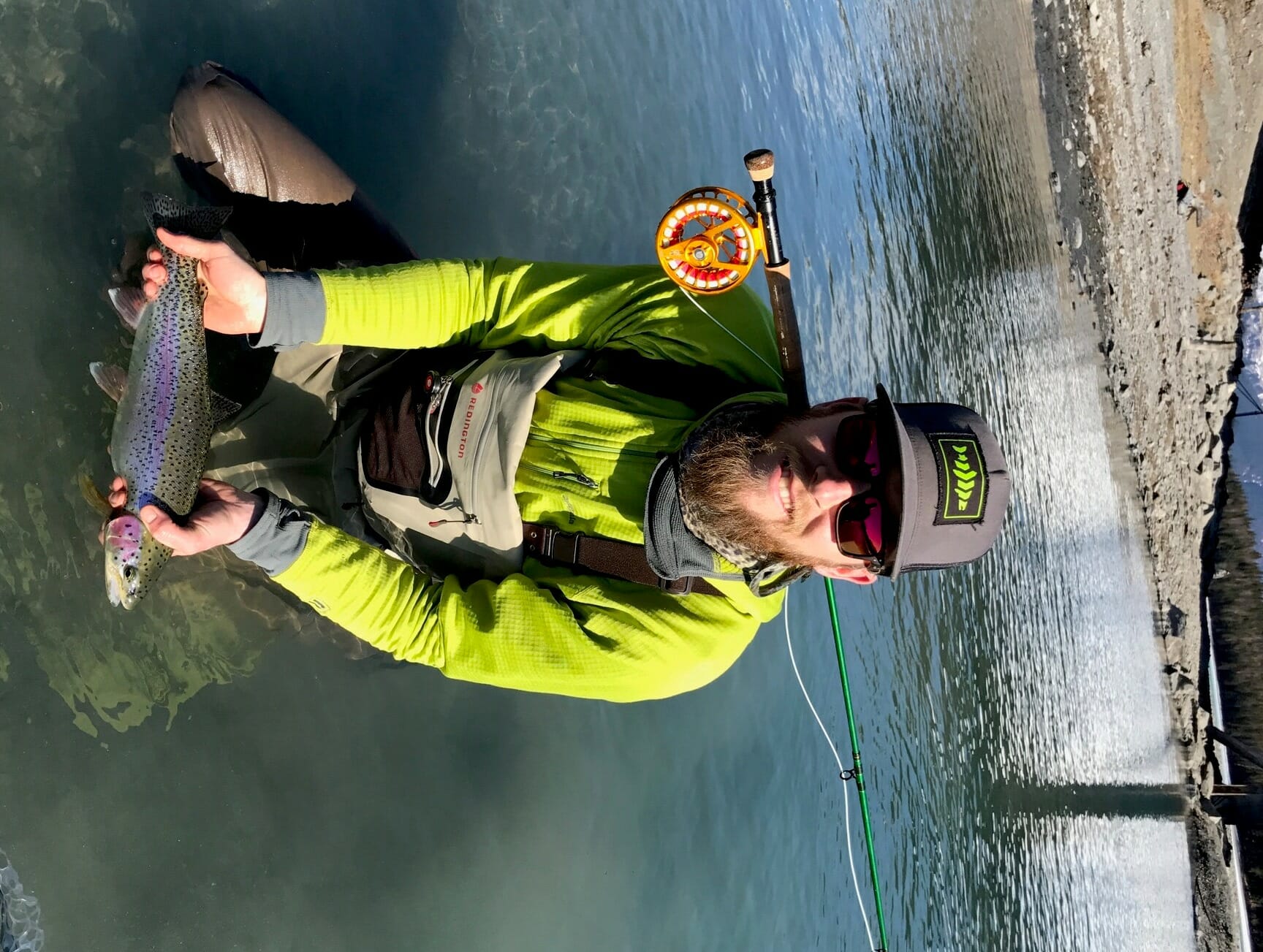Eric Booton with a nice early season rainbow trout from the Kenai River watershed.
By Austin Williams
I had barely stripped the line off my reel to make my first cast when I could feel my phone vibrating from the front pocket of my waders. Rats. Normally, I’d have let the call go, or not even have brought my phone to the river in the first place, but this wasn’t a typical day of fishing. Eric Booton, our Alaska engagement organizer, Karl Shultz, our Southcentral Alaska chapter president, and I were on our way to a public meeting on a proposal to build a 300-foot-tall dam across the largest tributary of Alaska’s famous upper Kenai River. We thought it only appropriate to stop off for a couple hours of fishing on our way—even if it meant I had to keep my phone close.
As I talked on my phone about potential mitigation measures that we already knew would be inadequate to protect the Kenai from downstream impacts of the dam, I watched Eric land a beautiful early-season rainbow trout and was reminded why we do this work.
Chugach Electric is a cooperatively-owned utility servicing Anchorage and some of its surrounding areas. It generates most of its electricity from natural gas, but has been exploring other options. While most of the rest of the country is finding ways to remove huge dams that block our rivers, months earlier Chugach Electric had applied for and received a preliminary license from the Federal Energy Regulatory Commission to build a 300-foot-tall and 700-foot-wide dam across the Snow River, which is the largest source of water into Kenai Lake in the headwaters of the Kenai River. The Snow River is glacially fed and is largely responsible for the Kenai’s emerald-green color. Blocking off the snow river and manipulating its flow for power generation would irreparably change the color, flow, sediment, productivity and character of Alaska’s most famous and most loved fishery. It was a bone-headed idea that threatened to drastically change the fishing on the Kenai from its very upper reaches all the way down to where it flows into Cook Inlet.
Fishermen weren’t standing for any of it.
They had come out in droves the evening before at a meeting in Anchorage, and were out in force again at a meeting in the small community of Moose Pass the day Eric, Karl and I made our stop for a few casts (and a phone call). News reporters at both meetings were unable to find a single person willing to speak out in favor of the dam while fishermen, outfitters and guides poured into the hallways.
In Alaska, we often deal with companies or government entities that become starry-eyed over their grandiose plans for the next big project. Too often these entities blindly pursue their ambitions with little regard for our fisheries, public sentiment or a broader recognition of the values that make Alaska unique. Backers of the proposed Pebble Mine in Bristol Bay are the poster child for this, and as we started planning for how we’d beat back the Snow River Dam we were gearing up for a long, drawn-out fight.
So it came as quite a surprise when Eric and I, just two days after fishermen stormed the community center in Moose Pass, learned that Chugach Electric was abandoning its proposal to build the Snow River Dam. The Kenai is a world-class river, and fishermen had come together to mount a swift and overwhelming opposition that could not be ignored.
So, if you are fortunate enough to float down the Kenai River this year, between casts to enormous rainbow trout, be sure to look around, take in the glacial-green color of the water contrasting against the fire engine-red sockeye salmon, and marvel at the power of fishermen who stand up together in defense of our great fisheries.
Austin Williams in the legal counsel for TU’s Alaska Program. He lives and works in Anchorage.



